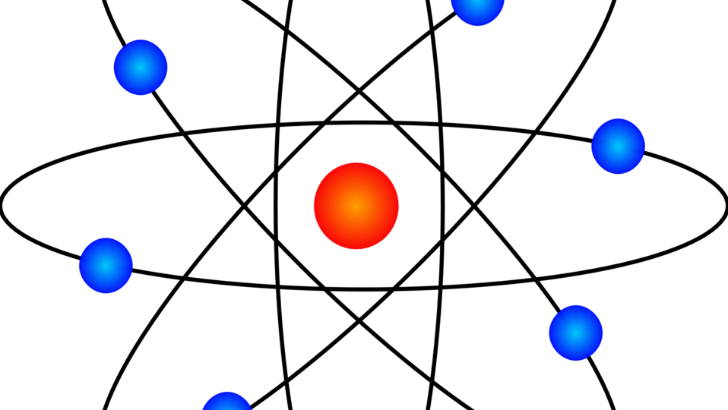The realm of subatomic particles is a captivating domain that lies at the very foundation of matter, revealing intricate dynamics that govern the universe. Among these enigmatic entities, the electron stands out as the singular subatomic particle endowed with a negative charge. Understanding the significance of the electron is paramount to grasping not only the structure of atoms but also the intricate mechanisms that underpin chemical reactions and physical phenomena.
Electrons are elementary particles, denoted in scientific terminology as leptons. They possess a negative charge of approximately -1.602 x 10-19 coulombs, a fundamental characteristic that distinguishes them from their positively charged counterparts, the protons, and the neutral neutrons. While protons inhabit the nucleus of an atom, electrons exist in defined energy levels or orbitals surrounding the nucleus. This arrangement is pivotal to defining the chemical behavior of elements.
The discovery of the electron in 1897 by physicist J.J. Thomson marked a watershed moment in the annals of physics, transcending the conventional understanding of atomic structure at the time. Prior to Thomson’s revelation, the atom was considered indivisible; however, the identification of the electron illuminated the existence of a more complex subatomic architecture. This discovery laid the groundwork for subsequent theories, including quantum mechanics, which elucidate the probabilistic distribution of electrons within an atom.
To appreciate the electron’s role within the atomic framework, one must delve into the atomic model itself. Atoms are primarily composed of three fundamental particles: protons, neutrons, and electrons. Protons and neutrons reside in the nucleus, where their interactions are governed by the strong nuclear force. In contrast, electrons are held in orbitals around the nucleus by electromagnetic forces, specifically the attraction between the positively charged protons and the negatively charged electrons. This delicate balance between attraction and repulsion results in the macroscopic stability of matter.
The negative charge of the electron is not merely a trivial detail; it profoundly influences the chemical properties of elements. Electrons occupy discrete energy levels, which determine how atoms interact during chemical reactions. For instance, the arrangement of electrons in the outermost shell, known as the valence shell, dictates an element’s reactivity and its ability to form bonds with other atoms. Elements with a full outer shell, such as the noble gases, exhibit minimal chemical reactivity, while those with incomplete valence shells are more reactive, seeking to either gain or lose electrons to achieve stability.
The concept of electron configuration is fundamental to understanding chemical bonding. Ionic and covalent bonds, the two primary types of chemical bonds, arise from the interactions of electrons between atoms. In ionic bonding, electrons are transferred from one atom to another, resulting in the formation of charged ions—positive cations and negative anions. Conversely, covalent bonds occur when atoms share electrons, thereby creating molecules that are integral to the diversity of chemical compounds.
Electrons also play a crucial role in the electrical properties of materials. Their mobility within conductive materials enables the flow of electric current, a phenomenon that drives modern technology. In metals, electrons are relatively free to move, thereby facilitating conductivity. In insulators, electrons are tightly bound, restricting mobility and rendering them poor conductors. The manipulation of electron behavior through techniques such as doping and bandgap engineering is foundational to semiconductor technology, which powers contemporary electronics.
Moreover, the electron’s negative charge has implications in fundamental physics, such as electroweak interactions, which unify electromagnetic and weak nuclear forces. This unification plays a crucial role in processes such as beta decay, where a neutron is transformed into a proton, an electron, and an antineutrino. Understanding these processes is essential for comprehending stellar nucleosynthesis, the mechanism by which elements are forged in the cores of stars.
In the realm of quantum physics, electrons exhibit wave-particle duality, a cornerstone principle that defies classical intuition. Electrons can be described as both discrete particles and wave-like phenomena, displaying behavior contingent on observation. This intriguing characteristic underpins the development of technologies such as quantum computing and quantum cryptography, which promise to revolutionize information processing and security in the digital age.
Nevertheless, despite their elementary nature, electrons harbor mysteries that continue to elude physicists. The quest to understand dark matter, for instance, often raises questions about the role of charged particles in the cosmic landscape. The Standard Model of particle physics, which categorizes fundamental particles and their interactions, excludes dark matter candidates, suggesting that our understanding of electrification and charge dynamics may be incomplete.
Ultimately, the exploration of which subatomic particle possesses a negative charge transcends a mere inquiry into atomic structure; it elicites broader philosophical considerations concerning the fundamental nature of matter and energy. The electron, in its multifaceted roles as a charge carrier, participant in chemical reactions, and contributor to the tapestry of physical laws, invites us to ponder deeper questions regarding the fabric of the universe. As research advances and technology evolves, the profound implications of the electron’s negative charge will undoubtedly continue to illuminate the path toward greater understanding in the ever-expanding landscape of physics.












